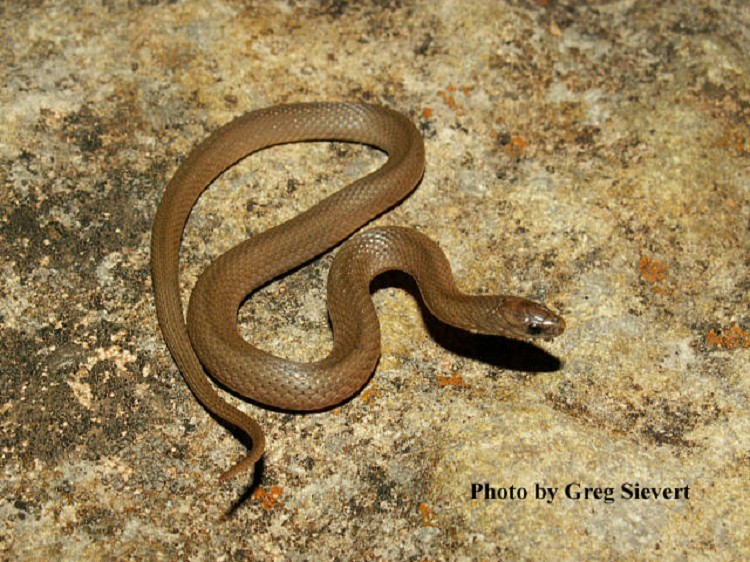Rough Earthsnake, Virginia striatula
The Rough Earthsnake is a plain-looking snake and occurs only in a few counties in the southwestern corner of the state, mostly around the city of Memphis.
Description: A small, keel-scaled snake (7.0 to 10.0 inches in length) that is gray, brown, or reddish-brown and has a pointed snout. Identity can be confirmed by 5 labial scales (upper lip) and loreal scales (in front of eyes) that are horizontal and touching the eye.
The belly is cream-colored or light gray. Males have a longer tails than females. Young are darker and grayer, and have a light band across the back of their head.
Similar Species: Smooth Earthsnake has smooth scales, small black flecks on the body, and 6 upper labial scales. DeKay’s Brown snake has dark spots on the back and no loreal scales. Ring-necked Snake has a yellowish ring around the neck and a bright yellow belly. Eastern wormsnake has smooth scales and a sharply contrasting belly.
Habitat: Found in a variety of habitats including rocky hillsides, pine and hardwood forests, forest edges, and suburban and urban areas. Rough Earthsnakes are secretive, burrowers that spend most of their time under rocks, leaf litter, logs, or trash.
Diet: Primarily eats earthworms, but also slugs, snails, and soft-bodied insects and their larvae.
Breeding information: Courtship and mating occur in April and May. Females are ovoviviparous (give live birth) and deliver 2-9 young during late summer or early fall.
Status in Tennessee: Range is very limited in Tennessee; appears to be fairly common in the Memphis area. Not considered threatened as these snakes have adapted to human environments in large cities.
Fun Facts:
- These secretive snakes rarely venture above ground, but occasionally will surface after a cool, heavy rain.
